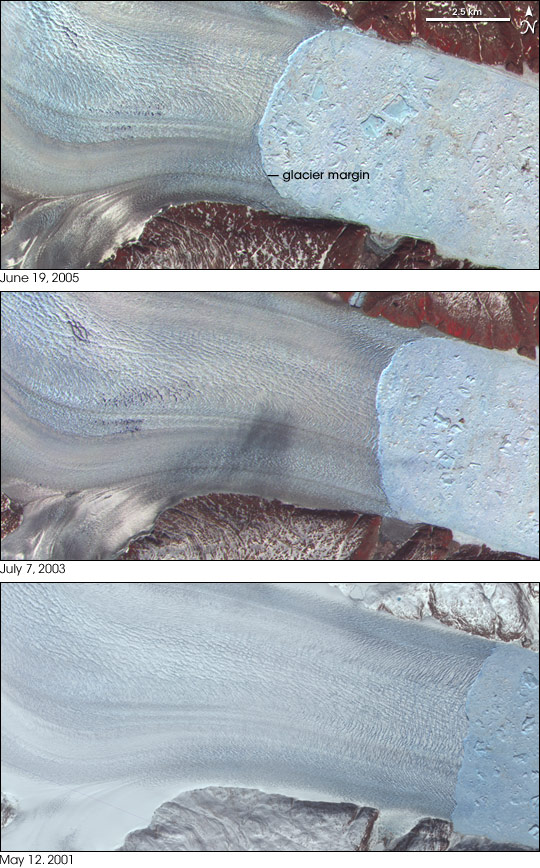Glacial quake on:
[Wikipedia]
[Google]
[Amazon]
 Glacial earthquakes are earthquakes as large as
Glacial earthquakes are earthquakes as large as
 Glacial earthquakes are earthquakes as large as
Glacial earthquakes are earthquakes as large as magnitude
Magnitude may refer to:
Mathematics
*Euclidean vector, a quantity defined by both its magnitude and its direction
*Magnitude (mathematics), the relative size of an object
*Norm (mathematics), a term for the size or length of a vector
*Order of ...
5.1 that occur in glaciated areas where the glacier
A glacier (; ) is a persistent body of dense ice that is constantly moving under its own weight. A glacier forms where the accumulation of snow exceeds its ablation over many years, often centuries. It acquires distinguishing features, such as ...
moves faster than one kilometer per year.
The number of glacial earthquakes in Greenland
Greenland ( kl, Kalaallit Nunaat, ; da, Grønland, ) is an island country in North America that is part of the Kingdom of Denmark. It is located between the Arctic and Atlantic oceans, east of the Canadian Arctic Archipelago. Greenland i ...
shows a peak every year in July, August and September, and the number is increasing over time. In a study using data from January 1993 through October 2005, more events were detected every year since 2002, and twice as many events were recorded in 2005 as there were in any other year. This increase in the numbers of glacial earthquakes in Greenland may be a response to global warming
In common usage, climate change describes global warming—the ongoing increase in global average temperature—and its effects on Earth's climate system. Climate change in a broader sense also includes previous long-term changes to E ...
.
Seismic waves
A seismic wave is a wave of acoustic energy that travels through the Earth. It can result from an earthquake, volcanic eruption, magma movement, a large landslide, and a large man-made explosion that produces low-frequency acoustic energy. ...
are also generated by the Whillans Ice Stream
Whillans Ice Stream () is a glaciological feature of the West Antarctic Ice Sheet, formerly known as Ice Stream B, renamed in 2001 in honor of Ohio State University glaciologist Ian Whillans.
Research
Whillans Ice Stream is one of about a half-do ...
, a large, fast-moving river of ice pouring from the West Antarctic Ice Sheet
The Western Antarctic Ice Sheet (WAIS) is the segment of the continental ice sheet that covers West Antarctica, the portion of Antarctica on the side of the Transantarctic Mountains that lies in the Western Hemisphere. The WAIS is classified as ...
into the Ross Ice Shelf. Two bursts of seismic waves are released every day, each one equivalent to a magnitude 7 earthquake, and are seemingly related to the tidal action of the Ross Sea. During each event a region of the glacier moves as much as over about 25 minutes, remains still for 12 hours, then moves another half-meter. The seismic waves are recorded at seismographs
A seismometer is an instrument that responds to ground noises and shaking such as caused by earthquakes, volcanic eruptions, and explosions. They are usually combined with a timing device and a recording device to form a seismograph. The outpu ...
around Antarctica
Antarctica () is Earth's southernmost and least-populated continent. Situated almost entirely south of the Antarctic Circle and surrounded by the Southern Ocean, it contains the geographic South Pole. Antarctica is the fifth-largest cont ...
, and even as far away as Australia, a distance of more than 6,400 kilometers. Because the movement takes place over such a long period of time—10 to 25 minutes—it cannot be felt by scientists standing on the moving glacier.http://www.scientificamerican.com/article.cfm?id=monitoring-antarctica-ice-movement-is-sticky-business Scientific American "Monitoring Antarctic Ice Movement Is a Sticky Business" June 4, 2008 It is not known if these events are related to global warming.
See also
*Cryoseism
A cryoseism, ice quake or frost quake, is a seismic event caused by a sudden cracking action in frozen soil or rock saturated with water or ice, or by stresses generated at frozen lakes.
As water drains into the ground, it may eventually freez ...
References
Ice sheets Bodies of ice of Greenland Seismology Glaciers Effects of climate change Environment of the Arctic {{Earthquake-stub